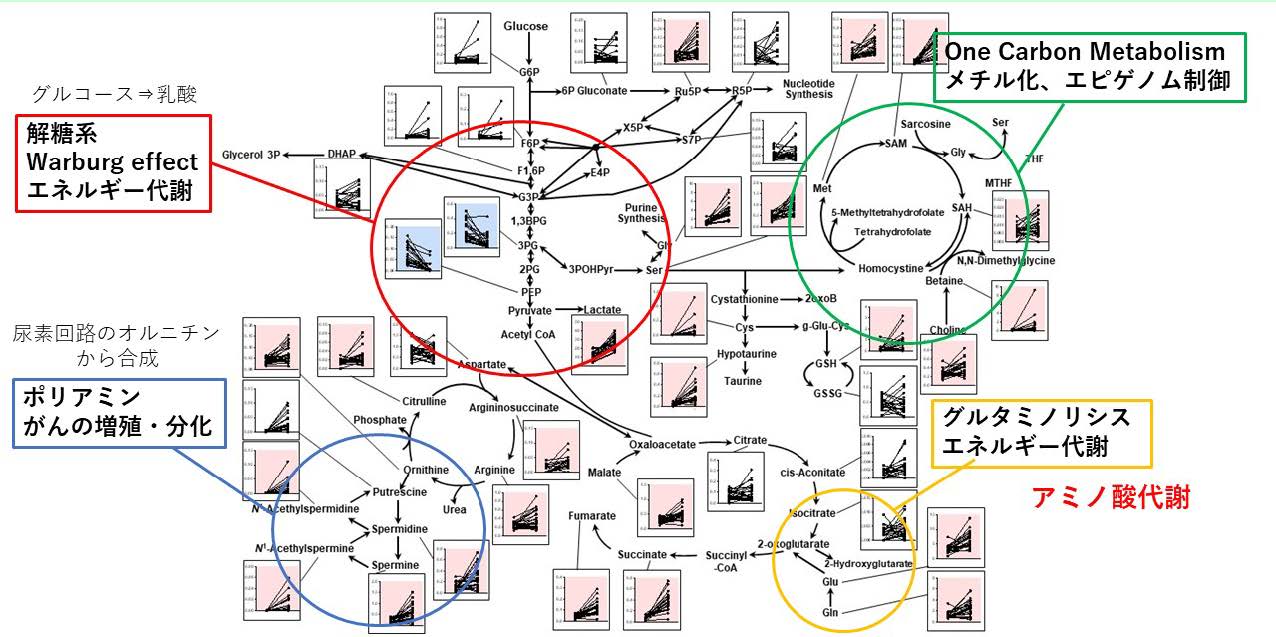







Home > Research > Research Overview > 2024 > Research aiming to improve the treatment outcomes of ovarian cancer.
Research aiming to improve the treatment outcomes of ovarian cancer.
Professor(obstetrics and gynecology)
NAGASE Satoru
Ovarian cancer is particularly challenging among gynecologic cancers to treat. This is due to difficulties in early detection, high rates of recurrence, and the decreased effectiveness of chemotherapy upon recurrence.
To address these challenges, we have focused on metabolomic analysis. Metabolomics is a novel technology that comprehensively measures metabolites, which change due to various factors including environment and disease, enabling cellular functional analysis and research into diagnostic applications for various diseases.
We conducted metabolomic analysis by collecting cancer tissues and biospecimens (saliva, plasma, urine) from ovarian cancer patients. We found that in cancer tissues, there is an upregulation of energy metabolism (glycolysis, amino acids) and polyamine metabolism (see Figure 1). Additionally, we identified N1, N12-diacetylspermine, a metabolite of the polyamine pathway, which is commonly elevated in both cancer tissues and biospecimens. By utilizing this metabolite, we discovered that ovarian cancer can be diagnosed with high accuracy (see Figure 2).
Given the association of the polyamine pathway with cancer survival and progression, we are developing new therapeutic approaches targeting this pathway. Our aim is to improve the treatment outcomes of ovarian cancer, and we are continuing our research in this direction (see Figure 3).

▲Figure 1:Metabolic Pathway Alterations in Ovarian Cancer Tissues In ovarian cancer cells, there is an upregulation of energy metabolism pathways such as glycolysis (conversion of glucose to lactate, known as the Warburg effect) and amino acid metabolism. Additionally, polyamine metabolism, which is associated with cancer proliferation and differentiation, is also enhanced.

▲Figure 2: Discriminative Ability of N1, N12-diacetylspermine Ovarian cancer can be identified using N1, N12-diacetylspermine. Diagnostic ability follows the order: tissue > plasma = urine > saliva.

▲Figure 3: Summary of Current Research Metabolomic analysis of cancer tissues and biospecimens (blood, urine, saliva) revealed that blood reflects metabolic changes within cancer tissues most accurately. We are currently developing an even more effective early diagnostic method for ovarian cancer by combining N1, N12-diacetylspermine with other metabolites. Additionally, research is underway to develop new therapeutic approaches targeting the polyamine pathway.
Related Links